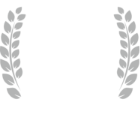ATS 2021 will feature presentations of original research from accepted abstracts. Mini Symposia and Thematic Poster Sessions are abstract based sessions.
Please use the form below to browse scientific abstracts and case reports accepted for ATS 2021. Abstracts presented at the ATS 2021 will be published in the Online Abstract Issue of the American Journal of Respiratory and Critical Care Medicine, Volume 203, May 3, 2021.
Search Tips:
- Use the keyword search to search by keyword or author's name.
- Filter your search results by selecting the checkboxes that apply.
- Click on "Clear" to clear the form and start a new search. .
Search results will display below the form.
Excess Public Health Impacts Associated with Air Pollution Above American Thoracic Society-Recommended Standards, 2017-2019
Session Title
Abstract
Author Block: L. Gladson1, K. Cromar1, G. Ewart2; 1Marron Institute of Urban Management, New York University, New York, NY, United States, 2American Thoracic Society, Washington DC, DC, United States.
RATIONALE: After completing its multi-year review of federal air quality standards, the U.S. Environmental Protection Agency (EPA) has decided to retain previous standards for long- and short-term fine particulate matter (PM2.5) at 12 µg/m3 and 35 µg/m3, respectively, and for ozone at 70 ppb. Over the past year, the American Thoracic Society (ATS), led by its Environmental Health Policy Committee, has also reviewed the most current air quality epidemiological evidence and decided to revise their recommendations to 8 µg/m3 and 25 µg/m3 for long- and short-term PM2.5 and 60 ppb for ozone. METHODS: Using methods developed in the annual ATS Health of the Air report, the differences in potential public health protections offered by EPA and ATS standards were assessed. For both agencies, pollution increments were determined for all U.S. counties with valid monitor data by comparing daily ambient concentrations of PM2.5 and ozone defined by EPA 2017-2019 design values to adjusted values meeting the respective standard. Pollution increments for counties without monitors were estimated using city-level averaging. Health-impact functions were applied to each county-level pollution increment using the EPA’s Environmental Benefits Mapping and Analysis Program (BenMAP) to estimate pooled adverse health outcomes. RESULTS: Meeting ATS recommendations throughout the country prevents an estimated 16,700 (95% CI: 9,900 - 25,600) deaths; 3,470 (95% CI: 1,790 - 5,090) lung cancer incidence events; 37,300 (95% CI: 8,200 - 79,900) morbidities; and 43.9 million (95% CI: 16.4 - 69.8 million) impacted days annually (see Table 1). This is 14,100 more deaths; 3,160 more lung cancer incidence events; 29,900 more morbidities; and 31.3 million more impacted days avoided compared to exceeding EPA standards alone. CONCLUSION: ATS-recommended air quality standards have the potential to prevent several times the number of adverse health events compared to meeting less protective federal standards.



